How to fix and prevent a frozen boiler condensate pipe
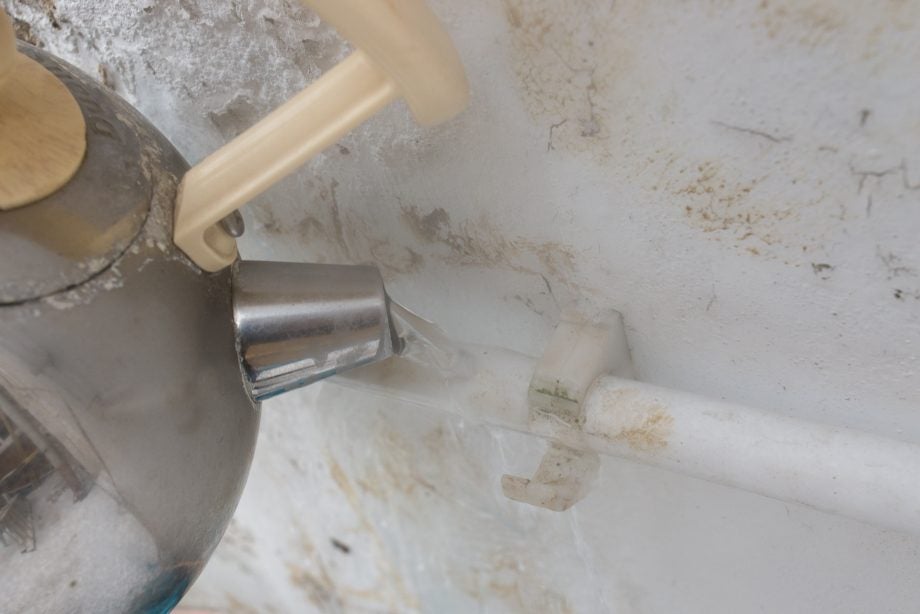
Condensing boilers give you a great combination of energy savings and flexibility, heating water on demand for both your heating and taps. Yet, one of the issues they have is through the condensate pipe that runs out the back of the boiler.
All condensing boilers operate at maximum efficiency when they’re set to the correct temperature to recover heat the waste gasses using a condenser. This process results in condensate that has to be removed through the boiler in liquid form, through the condensate pipe.
For most months, this is fine, but poorly-fitted pipes can freeze in cold weather. If you’ve woken up to find that you don’t have any heating and find that your boiler is flashing up an odd error message or is making a strange gurgling noise, then a frozen condensate pipe could be to blame if the temperature is (or has been) below freezing.
Although boilers are supposed to show an error message that helps you track this down, sometimes it’s not that simple. For example. my Glow-worm boiler has shown error messages F1, F9 and F13, even though the problem is the same.
Fixing a frozen condensate pipe
Before you start, turn your boiler off at its dedicated switch. If your boiler is on the ground floor, go outside and look for a plastic pipe that comes out from the wall that your boiler is mounted on. If you can see the end of it, take a look and see if it’s frozen throughout. A telltale sign is if there’s an icicle hanging out the end. Even if this isn’t the case, you can look or prod the end of the pipe with your finger to see if it’s frozen up. If you can’t see the end, then it’s worth trying the method to fix it anyway. If you can’t see a pipe coming through the wall, you may have an older type of boiler and will need to call a heating engineer.
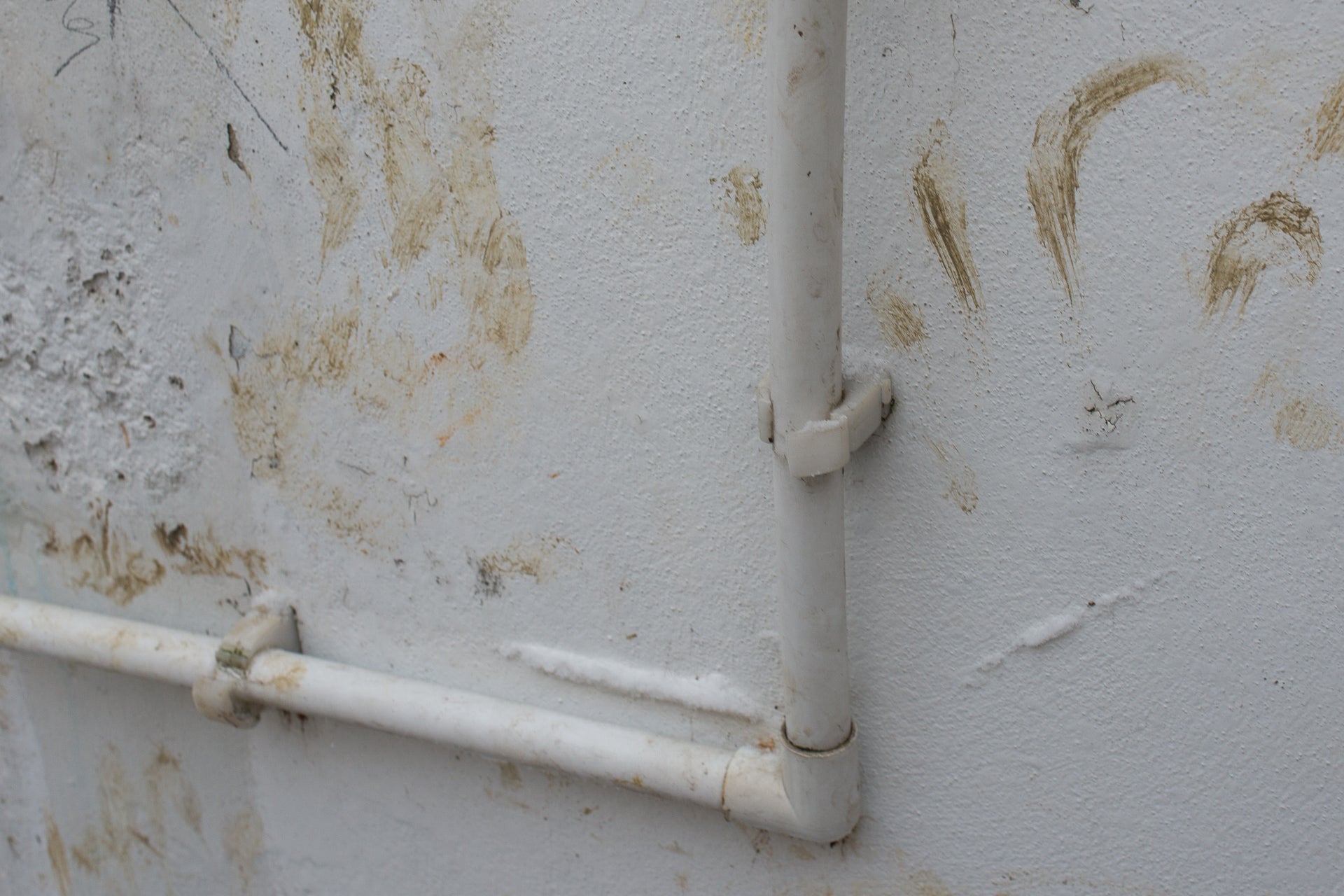
Likewise, if your boiler is mounted higher up, it’s dangerous to get to, so you’ll need to call a registered heating engineer.
Now, you need to thaw out the pipe, clearing the ice blockage. You can strap a hot water bottle to the pipe, although this takes time. The better option is to use warm water to melt the ice. Don’t use boiling water, as this could be dangerous; start your a kettle, but cut it off when the water is warm, but not boiling.
Now, go outside and pour the warm water up and down the length of the condensate pipe. Use a full kettle-load of water to make sure that you’ve got everything out; at my house, a popsicle-like block of ice slid out of the pipe. Repeat this step as necessary.
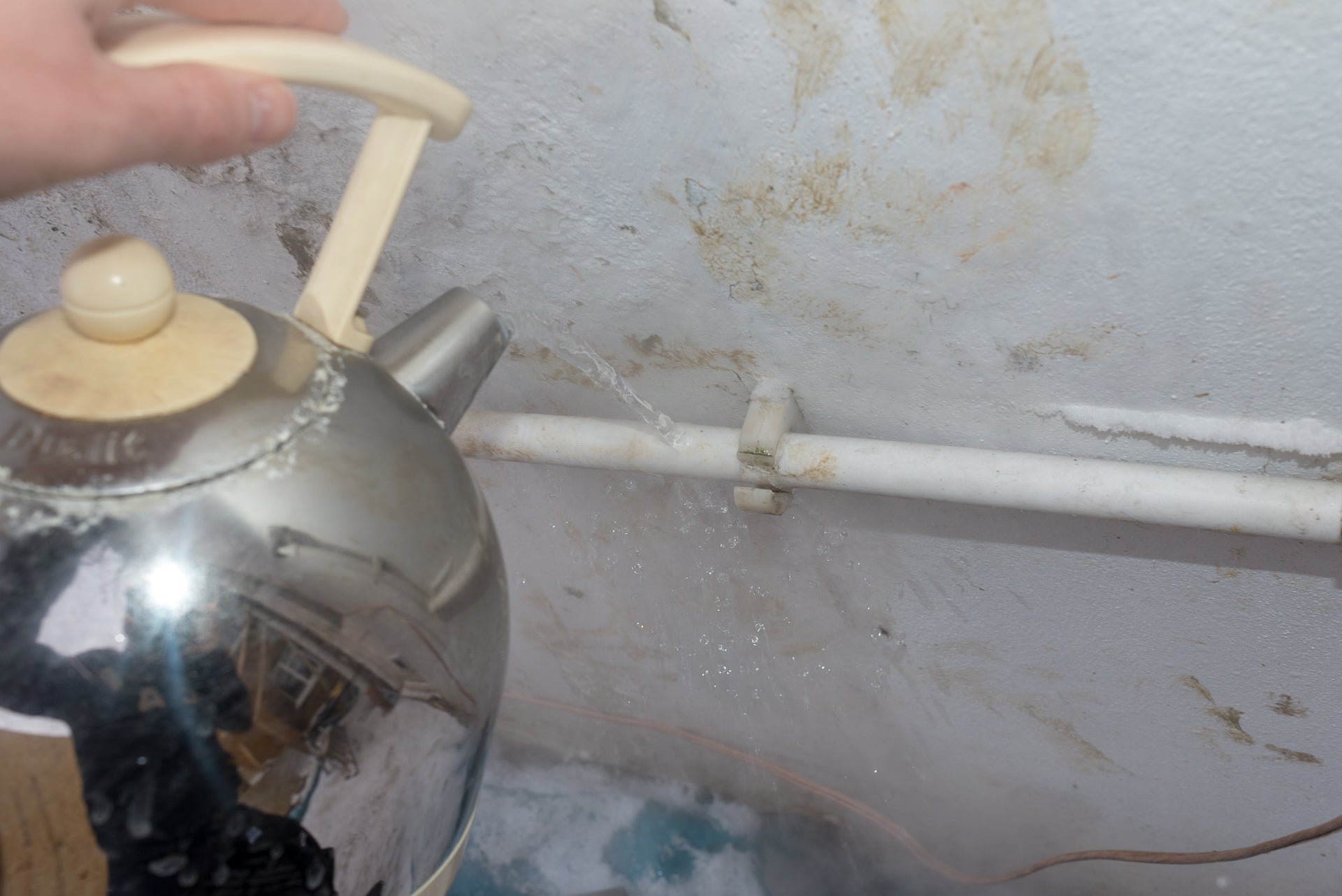
Now, go back in and turn your boiler on. It should start automatically, running through a startup cycle. If you still get an error message (I did on my Glow-worm), then you may have to reset the boiler by checking the manual (these are available online if you Google the manufacturer and model name). My Glow-worm has a reset button that you can push with a pin, underneath the display.
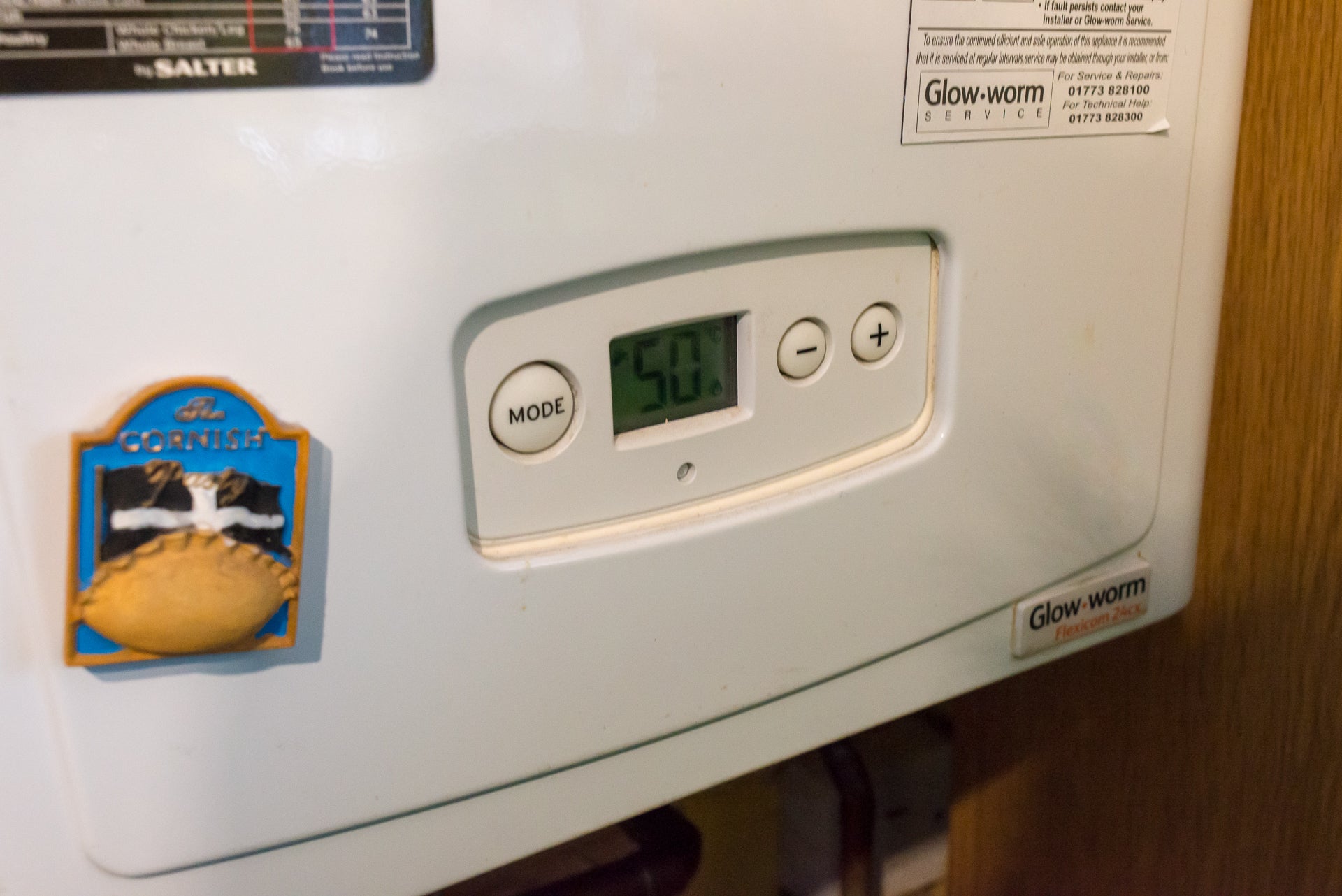
With the boiler fired up, you can now try your heating or, if you have a combi-boiler, turn on the hot water. The boiler should fire into life, and you should get hot water.
However, I had to go through an extra step, as my boiler had also lost a bit of pressure and wouldn’t start. Boilers should be pressurised to 1bar. To top up, you need to open the filling loop, turning off when the boiler’s display indicates 1bar (a little over won’t cause any harm, say 1.2bar). On my boiler, the filling loop consists of two taps located underneath the boiler; both must be opened to fill and both closed when done. Your boiler’s manual will tell you the correct procedure if you’re not sure.
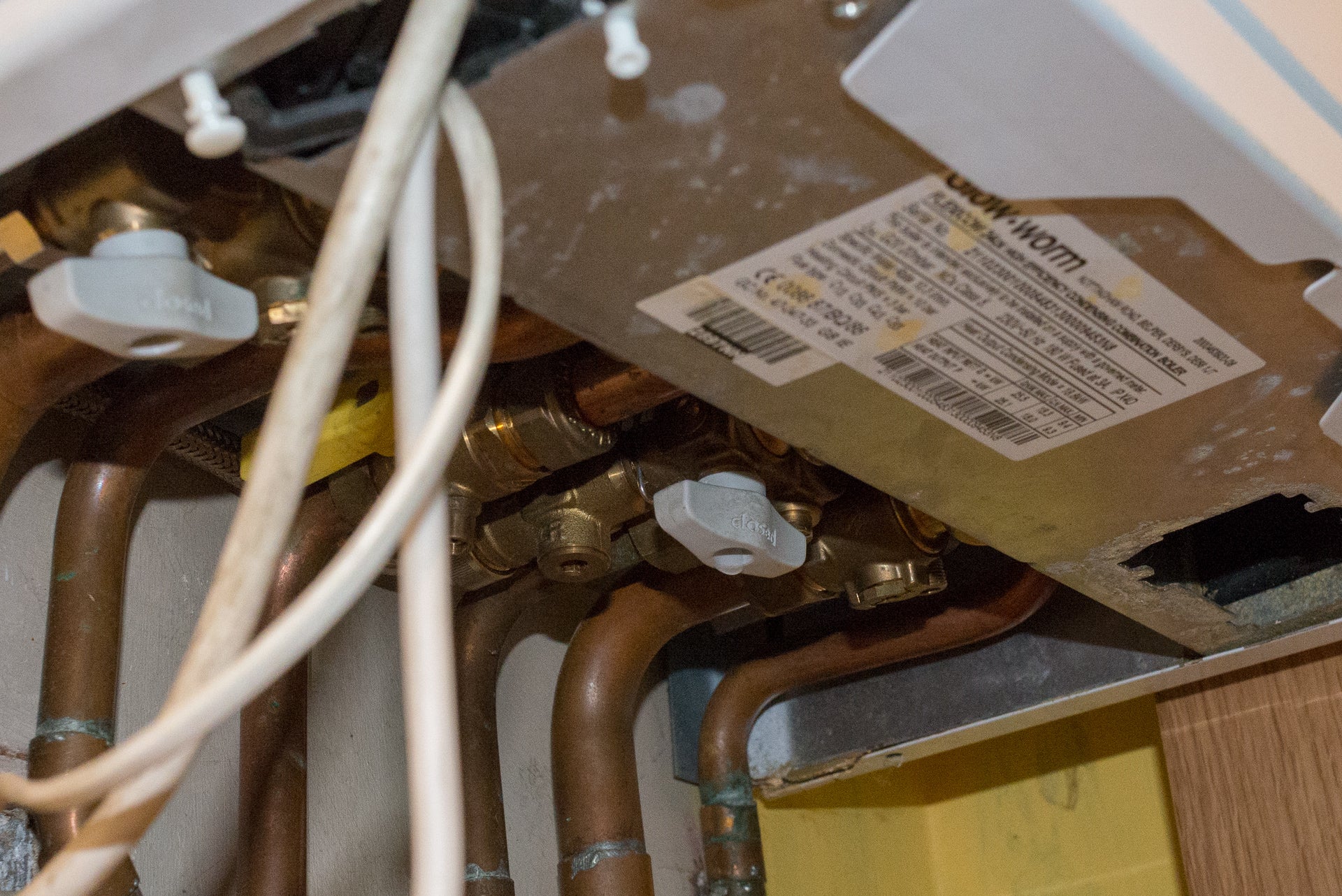
If your boiler is at the correct pressure and not working, do not fill it further, as this could damage it. If you’re not confident doing this step, then it’s best to call a heating engineer. Given that you had a problem with your boiler, it’s a good time to book a service and get it looked at properly, anyway.
How to prevent the condensate pipe freezing
The main reason that a condensate pipe freezes up is because the boiler and pipework have been poorly fitted. There are a couple of options. First, see if you can get a plumber to fit a larger pipe. A condensate pipe should be 25mm+ in diameter, but many plumbers have used smaller gauge pipework that is easier to clog.
Secondly (or alternatively), see if you can have the condensate pipe run into a waste pipe and drain so that the end is not exposed outside. As the condensate is slightly acidic, you can only run the pipe into plastic pipework; if you have metal pipes, these can corrode with the waste.
If these options aren’t possible, then lagging the pipe can help prevent problems, although this tends not be very effective in the coldest temperatures, particularly if the end is exposed to the elements.
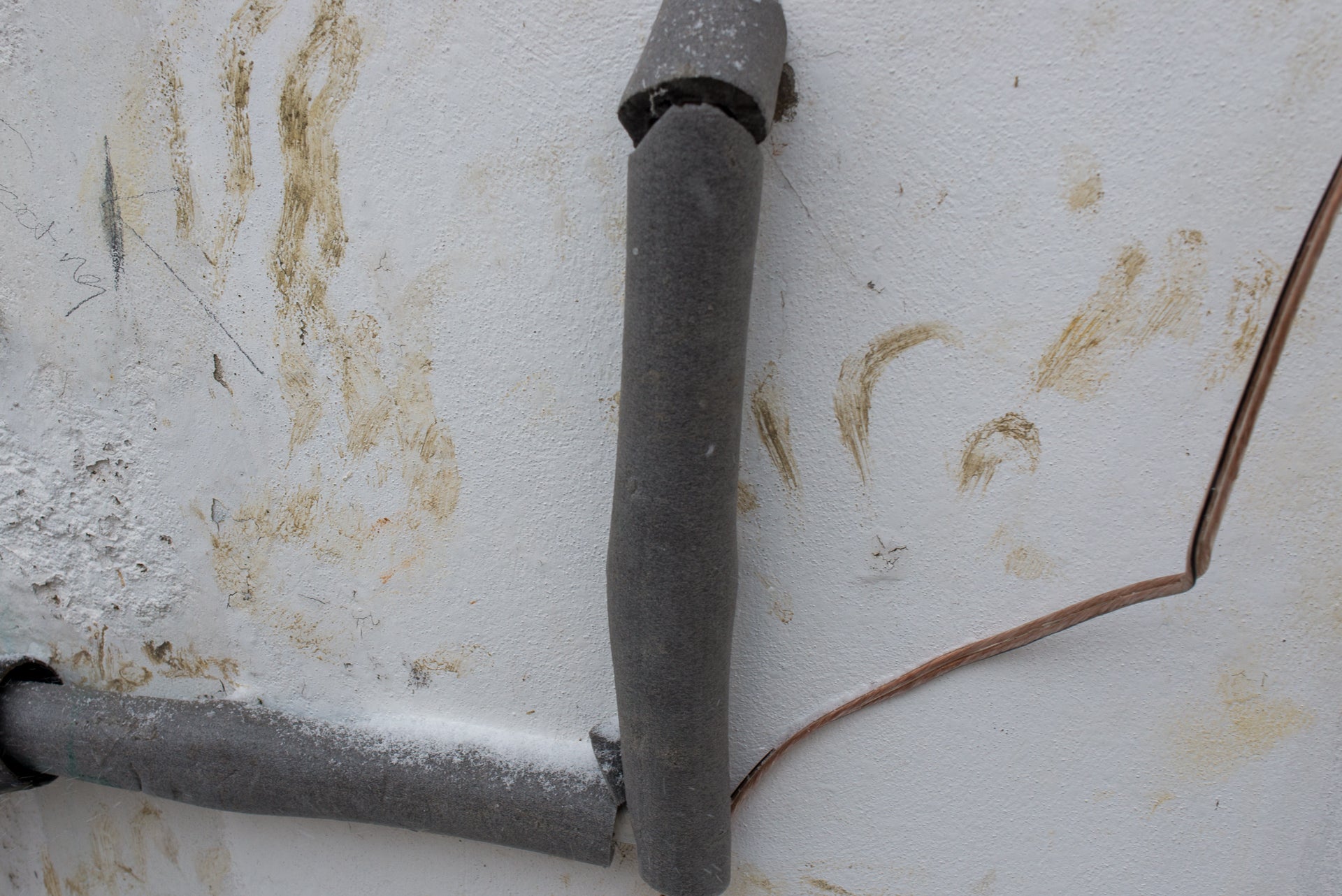
There’s another option that can help, albeit temporarily. My guide on setting a condensing boiler’s temperature talks about setting the best central heating temperature to make sure that your boiler is operating at its most efficient. The short version is that due to the way that condensing boilers work the return water temperature has to be 55C or lower; if it’s not, then the gasses can’t condense and turn to water. Turning your central heating up to 65C or higher should push your boiler so that it’s no longer condensing. This will reduce fuel efficiency but could help avoid frozen pipe issues; once the worst of the cold weather has passed, you can dial the temperature back down to make your boiler more efficient, while you sort out a plumber to fix the issue permanently.


